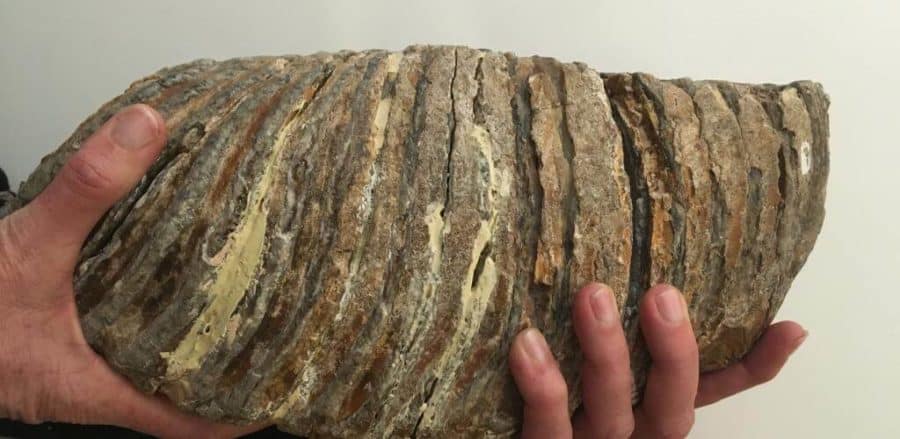Giant mammals, such as mammoths, woolly rhinoceros, and sabertooth tigers, once wandered every habitable continent but went extinct. New research demonstrates that such mammal biodiversity loss – a major conservation concern today – is part of a long-term trend lasting at least 125,000 years.
As archaic humans, Neanderthals and other hominin species migrated out of Africa, a wave of extinction in large-bodied mammals followed them. This occurred on all continents and intensified over time. The study, published April 20 in the journal Science is the first to quantitatively show that human effects on mammal body size predates their migration out of Africa and that size-related extinction reflects human activities.
The research, funded by a National Science Foundation grant, was led by professor Felisa Smith, a paleoecologist at the University of New Mexico along with colleagues from University of California San Diego, University of Nebraska-Lincoln, and Stanford University’s School of Earth, Energy & Environmental Sciences.
Profound influence on ecosystems
To document what happened to mammals as early humans left Africa, researchers compiled extensive data on climate and on mammal body size, extinction status and geographic location over the last 125,000 years. They also used the conservation status of modern mammals to model diversity and body size distributions for 200 years into the future. Their study investigated the role of body size and diet on the likelihood of extinction. These data were evaluated in light of climate change and human migration patterns over the same time frame.
The study showed that body size downgrading – the loss of the largest species on each continent over time – is a hallmark of human activity, both in the past and present. If this trend continues into the future, the largest terrestrial mammal in 200 years will be the domestic cow.
“We – both modern and ancient humans – have had a profound influence on ecosystems,” said Smith. “Our results clearly indicate that size-biased extinction is a hallmark of human activities and not a general feature of mammal evolution,” she said. “The big picture finding is that if things keep going the way they are, not only will biodiversity decline, but how energy flows through ecosystems will fundamentally change.”
Why large mammals matter
Large bodied animals maintain various aspects of the landscape. For example, mammoths weighed as much as a Caterpillar tractor. They compacted the soil – and that changed the water table. As herbivores, they also maintained grasslands by keeping certain invasive shrubs out.
What would happen if we lost all the large-bodied mammals? “If we lose elephants, we also lose their ecological interactions – how their foraging influences plant structure and vegetation, how their massive weight compacts soils and influences gas exchange and so forth,” said Smith. “We call large mammals ‘ecosystem engineers’ because of the strong influence they have on virtually all aspects of the habitat. And because large animals modify landscapes and move nutrients at a scale that can’t be replicated by smaller bodied relatives.”
The proportion of species that are threatened today far exceeds the proportion of species that went extinct during the geologic periods researchers looked at. “That’s troubling,” explained coauthor Jonathan Payne, a paleobiologist at the Stanford School of Earth, Energy & Environmental Sciences (Stanford Earth). “From an evolutionary standpoint, randomly removing species leaves a lot of the evolutionary information intact and gives you lots of different starting points for a recovery,” he said. “If you selectively remove part of the diversity, it’s very hard to get back to where you were.” Some estimates suggest as many as 25 percent to 50 percent of mammals could be extinct in 200 years.
Reviewing the fossil database
Seeking to determine what role hominin activity may have played in shaping extinction patterns and the distribution of mammal body sizes, the authors, who included Rosemary Elliott Smith of the University of California San Diego and Kathleen Lyons of the University of Nebraska-Lincoln, sorted extinctions in the late Quaternary Period into five time intervals spanning from 125,000 years ago to 200 years into the future — a period that encompasses the migration of hominins out of Africa and eventual expansion throughout the globe. In the five intervals, their analysis found the average body mass of victims and survivors differed by as much as two to three orders of magnitude.
As part of the study, titled “Body size downgrading of mammals over the late Quaternary,” researchers compiled datasets encompassing close to 6,000 species, often extrapolating body size from measurements of teeth or a single bone.
Consistent pattern
“I was surprised at how consistent the selectivity pattern is,” said Payne. “It shows up on every continent and in every time interval where there are enough extinctions to run an analysis.”
The analysis clearly showed that the whole fossil record does not look anything like the periods after hominins appear. None of the five earlier mass extinction events or changes in climate increased extinction risk for animals so strongly based on size, either big or small.
“Climate warming, climate cooling, long-term warmth, long-term cold, highly variable climate – none of those are associated with highly selective extinction in the fossil record,” added Payne. “That suggests that you’re getting a very much hunting-dominated signal.”
In earlier geologic periods, landscape changes and hominin populations remained relatively small. Today, less targeted extinction processes such as climate change, urbanization, habitat alteration, and introduced predators are combining with the strongly size-biased effects of hunting, poaching, and urban encroachment.
If our reporting has informed or inspired you, please consider making a donation. Every contribution, no matter the size, empowers us to continue delivering accurate, engaging, and trustworthy science and medical news. Independent journalism requires time, effort, and resources—your support ensures we can keep uncovering the stories that matter most to you.
Join us in making knowledge accessible and impactful. Thank you for standing with us!

